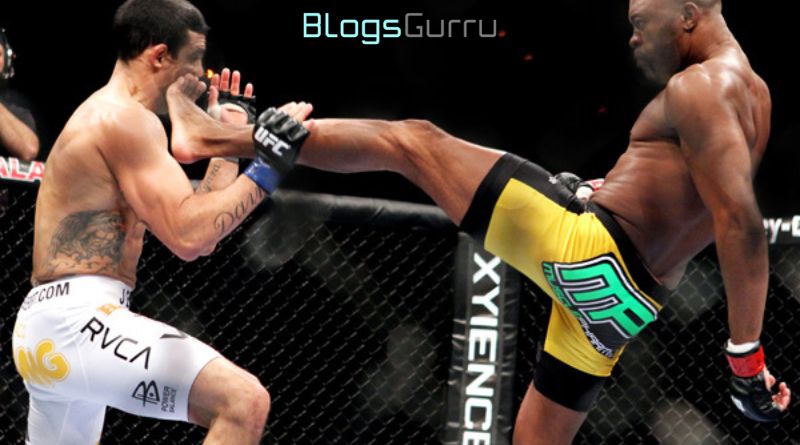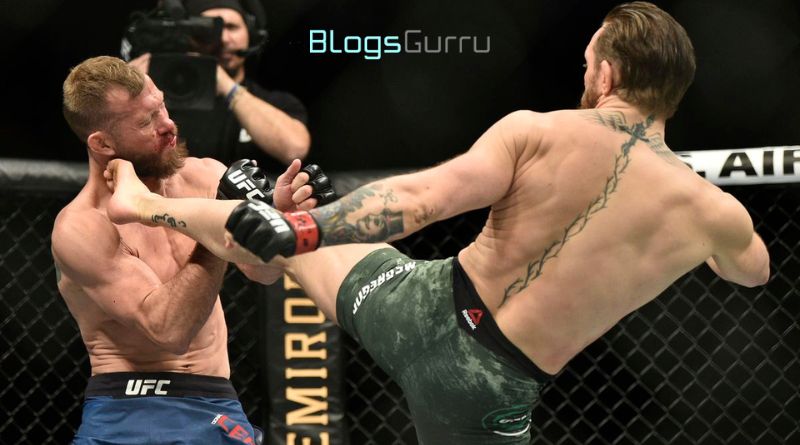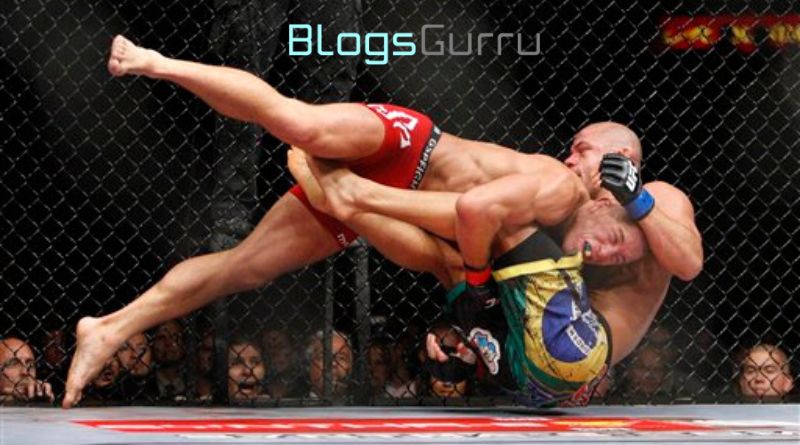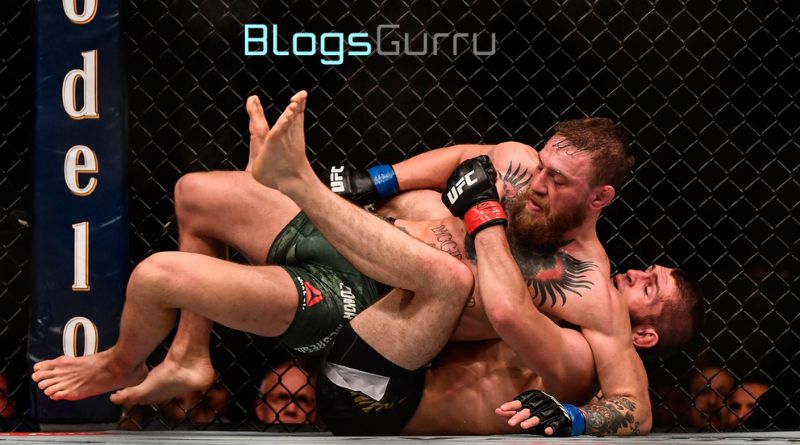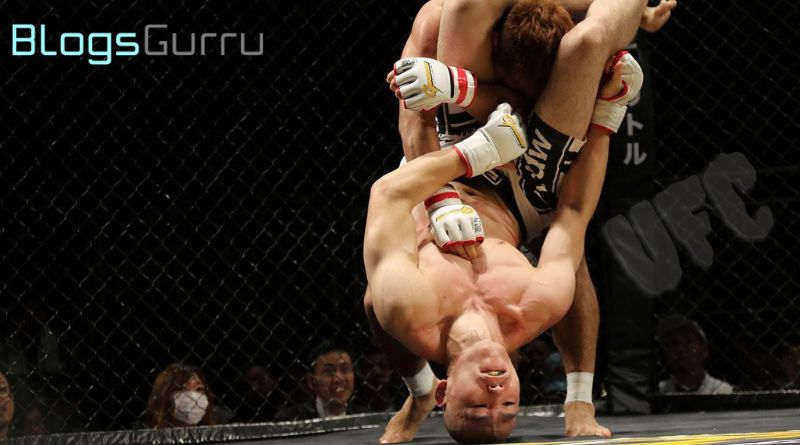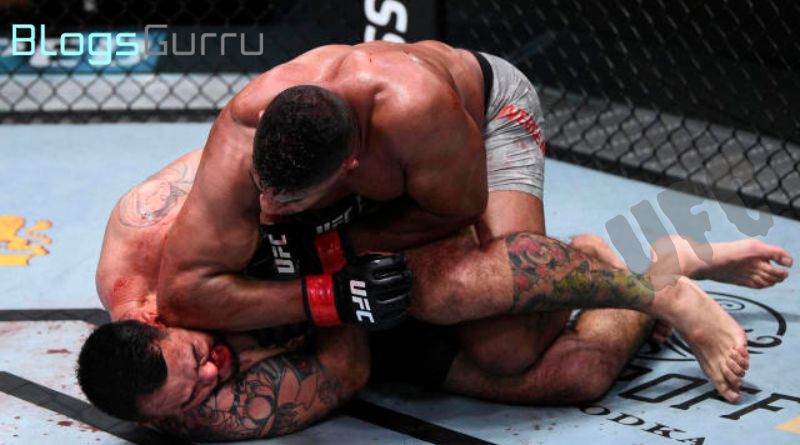MMA in 10 Moves: A Technical Introduction
A mixed martial arts battle has a lot of activity going on all at once. Muay Thai, wrestling, and Brazilian jiu-jitsu are just three of the component disciplines that may be switched between in a split second. In a single battle, the fighters may use hundreds of different techniques, yet the commentators hardly ever have time to break down the mechanics or subtleties of each move.
In this article, 10 of the most prevalent MMA fighting manoeuvres are examined. Any fighter who hopes to compete in one of MMA’s main promotions must at least be familiar with the fundamentals of each art; knowing how to strike, wrestle, or grapple is not sufficient.
This is an introduction to technical terms. This article is for you if you’ve ever wondered what a proper jab looks like, how a double-leg takedown works, or why we see so many rear-naked chokes. I’ll guide you through each technique in detail, offer images and instructional videos, and frequently link to GIFs that highlight the underlying concepts.
In fact, combat involves much more than just one or two actions. Transitions between phases, offensive production and tempo, confidence, rhythm, and a dozen more sophisticated ideas all matter. But the basis for all of those things is fundamental technological knowledge.
Let’s gain some knowledge about MMA.
1. Jab
The jab is a striker’s most valuable and crucial weapon. It is a straight punch with the lead hand at its most basic. However, it falls well short of capturing the full scope of applications for which the jab can be used. Although it can be learned in a single lesson, mastery takes a lifetime.
A jab can be anything from an arm outstretched probing shot to a battering ram that, when used repeatedly, can break faces. Applications include determining the user’s desired distance, developing a rhythm and timing, and positioning subsequent shots.
It has special utility as a counter, as former UFC middleweight champion Anderson Silva utilized it against Forrest Griffin and Yushin Okami, or to break up the opponent’s rhythm because it is the fastest attack that can be thrown. Aggressive fighters like Cain Velasquez and Daniel Cormier can advance more covertly by giving their opponents something to ponder as they push them back.
Georges St-Pierre is the MMA fighter that has used the jab the best during his career. He tossed it several different ways, all of which were successful. His signature move was to charge in with it from close range, as shown in the GIFs below vs Josh Koscheck and BJ Penn.
St-Pierre used the jab expertly throughout the Koscheck fight, in particular, landing 50 jabs in total over the course of the 25-minute contest. He blasted his opponent from safety for all five rounds, breaking his orbital bone in the process. These weren’t pitter-patter blows either.
T.J. Dillashaw, the UFC bantamweight champion, has improved his jab skills under the guidance of Duane Ludwig. He employs it in a number of different ways, frequently using his lead hand to probe, as he does here before launching a cross and head kick, and sporadically launching devastating punches as counters or to break his opponent’s rhythm.
At UFC 192, Ryan Bader kept Rashad Evans on the end of his jab the entire time. Take note of how Evans’ extended arm is still missing the intended aim.
At UFC 192, Ryan Bader kept Rashad Evans on the end of his jab the entire time. Take note of how Evans’ extended arm is still missing the intended aim. Zuffa LLC/Getty Images/Jeff Bottari
Fewer MMA fighters actually excel at applying the jab, making it even more beneficial than it is in boxing. This offers the experts a large window of safe space when their opponent has little to offer. The capacity to keep your opponent outside of range to shoot is a key advantage in a sport where takedowns are a huge factor.
The jab is the most fundamental and crucial tool in every striker’s toolbox, despite the paucity of proficient users in MMA.
2. Overhand
Even though it’s less frequent than the jab, the overhand, a looping punch that resembles a baseball pitch and is delivered from the backhand, distinguishes MMA from other fighting styles that use foot striking.
Why? there are two. The default high guard—tight elbows and hands covering the sides of the face—is harder to block since MMA gloves are smaller. Second, level adjustments, where a fighter ducks down and crouch down, are the finest setup for overhands. In MMA, which incorporates takedowns, level adjustments are far more frequent than in boxing.
For a very long time, MMA overhands were mocked by boxing purists. Even when performed flawlessly, it is an unsightly stroke, a windmilling swing that can nearly land vertically as the user pulls his or her head out of line. It contrasts sharply with the admiration a boxing spectator has for a crisp cross or a piercing jab.
This was never the case, though, as many boxers, especially those from Cuba or Eastern Europe, use the overhand strike, and its effectiveness cannot be disputed.
But MMA continues to be more associated with the overhand. Chuck Liddell, a former UFC light heavyweight champion, made this punch his signature by using it to defeat Alistair Overeem and Randy Couture. Fedor Emelianenko, a former Pride heavyweight champion, delivered a stunning throw that convincingly put Brett Rogers and Andrei Arlovski to sleep.
On May 25, 2013, inside the MGM Grand Garden Arena in Las Vegas, Nevada, during the heavyweight match at UFC 160, Junior dos Santos punched Mark Hunt.
Roy Nelson has based his whole UFC career on the overhand, taking out many opponents, including Antonio Rodrigo Nogueira and Cheick Kongo. Junior dos Santos, a former heavyweight champion of the UFC, won the championship with a punch and then viciously overhanded knocked down the iron-chinned Mark Hunt. Dan Henderson’s overhand finish of Michael Bisping is the most famous knockout in MMA history.
The overhand punch is the most emblematic of all MMA strikes. It is common in the sport for good reasons, albeit serving as a sign of the unquestionably rougher character of MMA striking: It’s a powerful punch that works well in the broader tactical setting and smaller gloves.
3. Round Kick
With a few changes, the round kick is a native of almost all kicking arts. The lower part of the shin should be used to land it because most MMA competitors learn to throw it in a muay Thai-inspired manner.
Simple: Step or pivot on the lead foot so that it is perpendicular to the target, thrust the hip so that it is in front of the kicking leg, and swivel the hip over to provide the most force to the strike. The abdominal muscles may be scrunched up and the hand on the kicking side may be moved in a chopping motion, but these movements aren’t strictly necessary.
The muay Thai-style kick has more of a whipping action than a snapping one, in contrast to the karate-style round kicks that we occasionally see in mixed martial arts from competitors like Lyoto Machida and many of the Russian fighters who are now competing in the UFC. It’s a strong blow that feels like being struck by a baseball bat.
The low, middle and high levels are all susceptible to the round kick. Given that it is thrown from a considerable distance and has a wide margin for error, the low kick is the easiest to land. The center kick is the most hazardous since it is simple to utilize punches to block the user. Since the high kick is the slowest and provides the opponent the most time to respond, it is the hardest to land.
Jose Aldo, the current UFC featherweight champion, is the best low kicker in MMA. He is not only incredibly quick, but he also sets them up nicely with his fists. Because of his impeccable timing, he hits his targets just as his opponent rotates his leg. Another skilled kicker, Rafael dos Anjos, the UFC lightweight champion, repeatedly hit Nate Diaz’s lead leg and broke it.
Anthony Pettis, a former champion, is a body kick expert. In their second encounter, prior to the armbar finish, he used a series of beautiful left kicks to tenderize Benson Henderson’s torso and blast Donald Cerrone’s liver.
In MMA, a kick to the head usually lands cleanly as a result of a deft setup or flagrant error. Before landing one on Joe Lauzon’s dome, Pettis flashed his hands. Dillashaw set up this head kick on Renan Barao by threatening with his straight left. Round kicks are a crucial component of every MMA fighter’s repertoire, regardless of where they are thrown.
4. Knee From the Double-Collar Tie
One of the fundamental MMA stages is the clinch. In a way that grappling, range striking, and wrestling don’t, it blends elements of other combat sports into a diversified totality. Short punches from boxing, takedowns, control from wrestling, and trips and throws from judo are all used, but knees from the double-collar tie, often known as the “muay Thai clinch,” rule supreme.
The double-collar tie actually has MMA roots in both muay Thai and wrestling. The hands are put one over the other on the opponent’s head’s crown, and the forearms are forcefully pinned to the sides of the opponent’s jaw. As you pinch your forearms together, your chest should feel squeezed.
When done correctly, this provides the user complete control over the opponent’s movements: the body moves in lockstep with the head. As Anderson Silva frequently proved against Rich Franklin, masters of the double collar tie excel at throwing the opponent off balance with a minimum of movement.
Soon after, knees follow with complete command of the opponent’s balance, stance, and position. The most eloquent illustration of mastery comes from Silva’s first encounter with Franklin. The Spider varies the placement by tossing first to the body and then pulling Franklin down into a crushing knee to the face with the help of the double-collar tie. This is what Wanderlei Silva did to Rampage Jackson.
The knees from the double-collar tie can be used sequentially or as a transitional strike. Jake Ellenberger quickly took hold of Jake Shields, moved back to make room for his hips, and then delivered two knee strikes to end the fight.
This is a fundamental element of any fighter’s game, however, the double-collar tie has additional applications and knees can be employed from a variety of angles.
5. Double-Leg Takedown
A common MMA takedown is a double-leg takedown. Practically every fighter, whether they routinely use it or not, has some understanding of how to shoot the double in its most basic form, making it simple to teach and learn.
The double has various versions, but at its core, it entails a level change with the knee striking the ground, a penetration step to get near to the opponent’s hips, shooting the hands behind the opponent’s legs, and either placing a hand behind each knee or combining them behind the thighs.
The user then has a variety of options for completing. Olympic gold medalist Jordan Burroughs and UFC light heavyweight Ryan Bader consider the prospect of off-balancing the opponent by putting the head in the stomach or sternum.
Alternately, as St-Pierre does here to Dan Hardy, one can situate the head on the outside of the opponent’s chest and apply lateral head pressure to throw the opponent off balance and complete the takedown.
However, in contemporary MMA, it is insufficient to just drop down for a double-leg and shoot in a wide-open area without a setup. Almost every fighter is capable of sprawling well enough to escape. As opposed to this, we see fighters using double-legs to counter the movement of their opponents, as GSP demonstrated in the previous GIF, or punches to confuse them. Demetrious Johnson, the bantamweight champion and one of MMA’s best double-leg experts, is a master at it.
The most fundamental takedown is the double-leg. It is effective at all levels, from amateur matches performed in smoky taverns to UFC championship fights at the MGM Grand. The settings and skill levels vary, but no fighter succeeds without having a thorough understanding of the double.
6. Trip
Trips are takedown clinches. They are divided into two categories: inside and outside, depending on whether the user’s foot is outside or inside that of the opponent. The mechanics are the same in both scenarios: The opponent is knocked to the ground as a result of pressing with the upper body and taking away one of the legs needed for balance.
It’s difficult to emphasize the vast number of possible permutations in this situation. They can be carried out from body locks, where the opponent’s arms are under yours and clasped behind your back; double underhooks, where the hands are in the same position but not clasped; over/under, where one arm is under yours and the other over, or double overhooks when the opponent has either double underhooks.
Showing this is easier than describing it. Here are two examples of vicious inside trips: one by Olympic gold medalist Adam Saitiev versus Derek Brunson, and the other by Olympic silver medalist and UFC middleweight contender Yoel Romero.
Undoubtedly remarkable, but still an outside journey, this one from Cormier. Here is a tired Shogun Rua hitting an outside trip from the over/under against a more worn-out Henderson. Yoshihiro Akiyama turned Alan Belcher’s missed kick into an outside trip.
Trips from the clinch, like double-legs, are a staple in every fighter’s arsenal, whether they employ them or not. The inside and outside trip are variations seen in every takedown-based discipline, including folkstyle wrestling, judo, and sambo, and for good reason: They’re simple and efficient.
7. Sprawl
The double-leg and trip takedowns are two distinct sorts of takedowns, but what about the techniques required to prevent being taken down? This is where the practical sprawl, the go-to response to a double-leg and occasionally a single-leg, is useful.
There are many variations, but a sprawl fundamentally entails lowering one’s hips back out of the opponent’s hands’ reach as he extends his hands forward to accomplish the takedown. The hips move back out of reach while the opponent tries to drive forward to reach them, and the sprawler drives his or her weight down to stop the drive.
Digging for one or two underhooks as the opponent shoots in is the final component of a sprawl. The opponent is pushed back by the opponent’s hips lowering and hands squeezing under the target’s armpits. Both hands may go under, or one hand may go under while the other pushes down on the opponent’s head or shoulder.
One key tool is the sprawl. The term “sprawl-and-brawlers” refers to an entire class of combatants. Its founders included Liddell, Wanderlei Silva, and Mirko Filipovic, and it is still relevant today. There is absolutely no way to avoid the sprawl in MMA if one chooses to fight on their foot.
Let’s examine a few of its top practitioners. Joanna Jedrzejczyk, the current UFC strawweight champion, had a devastating sprawl, and Carla Esparza, the previous champion, failed to land any shots as she shot in. Robbie Lawler, the welterweight champion, is even more effective: Early on in the fight, he sprawls nicely against Rory MacDonald and follows it up with a knee; later on, he executed the ugliest sprawl I’ve ever seen.
Jedrzejczyk and Lawler, two new-school sprawlers, differ from Liddell and Silva in that they cause injury to their targets when they shoot. Not only do they avoid takedowns, but they also land a few elbows or knees to convince the opponent that shooting was a bad idea in the first place.
Pure strikers are welcome in MMA, and it’s the humble sprawl that makes it possible for them to keep the battle on the ground.
8. Guard Pass
Simply put, a guard pass is a technique used by the fighter on top to get around the opponent’s legs and take control of the ground battle. The guard pass has hundreds, if not thousands, of variations, most of which are only really effective in competitive sport grappling in or out of the gi, but it continues to be a fundamental weapon in any fighter’s toolbox.
Guard passing isn’t as prevalent in fighters’ styles today as it once was. It is less useful in MMA than it is in grappling to go from full guard to half guard to side control to mount and possibly to the back.
With the exception of the best grapplers, side control gives absolutely nothing in MMA; without the friction a gi provides, it’s challenging to hold an opponent there and challenging to posture to generate meaningful force with ground attacks. Although the mount has its uses, the half guard or the back represents the true rewards.
It is challenging for the opponent to stand back up or change positions in half guard as opposed to side control or the mount. The fighter in the lead can maintain a low center of gravity for control while also adopting a deadly ground attack stance. The threat of submission is always present while attacking from behind, making it simple to maintain control for extended periods of time.
Despite all of this, the guard pass is still a crucial ability, but only the most skilled players use them frequently. One of the top two or three grapplers in MMA, Ronaldo “Jacare” Souza, possesses a variety of inventive passes. He gets through Chris Camozzi’s guard by pressing his feet into the cage, as can be seen in this picture. Even while playing against superior defenders like MacDonald, Demian Maia makes accurate passes.
In his pomp, St-Pierre was an excellent guard passer, although he mainly used it to work to half guard before striking. Fabricio Werdum, the UFC heavyweight champion and a top-notch grappler with a full arsenal, moves without incident. He effortlessly cut through Travis Browne’s guard while dominating Antonio Rodrigo Nogueira with a fast-paced set of passes that prevented the veteran from getting comfortable.
Guard passing is especially helpful in the lowest levels of MMA, where grappling fundamentals are scarce. The highest levels make it helpful once more. It loses a lot of its effectiveness in the middle, where everyone is more or less adept, but it is still an important aspect of the sport.
9. Rear-Naked Choke
The importance of getting to the back and applying the rear-naked choke has increased significantly as guard passing has become less and less crucial. Since there is a greater emphasis on getting back up after being briefly knocked down in MMA in 2015, there are many more opportunities for fighters to reach the back.
Rear-naked chokes have resulted in 34 of the 71 submissions in the UFC this year, and that number is not going to decrease.
Sharp fighters have spent a lot of time perfecting the ability to transition directly to the back, skipping the arduous process of switching from guard to half guard to side control to mount, and finally, hopefully, reaching the back. Why not just let the opponent go if they make an attempt to stand up rather than trying to hold them down and then trying to switch to the back?
As a result, the MMA ground game has become more frantic and fast-paced and has gradually veered away from sport grappling. Equal parts wrestling and BJJ are used in MMA-adapted grappling, and the union of the two has produced some intriguing possibilities for adaptation and integration.
As a result, back-takes have elevated in importance inside the game. Brad Pickett was struggling to get up after being rocked when Barao struck a really slippery one. Eduardo Dantas, a teammate of Barao’s, made one of the most seamless transfers from defending a single leg to the back. On the feet, Maia positions himself behind his opponent, reaching for the back in transition.
Applying the rear-naked choke is as easy as pressing the opponent’s head forward while pressing the opponent’s forearm over their throat and placing one hand across their opponent’s bicep. Depending on the grip and body positioning, there are numerous variations.
In terms of the rear-naked choke, Maia is a pro. Here, he is striking Neil Magny from a body triangle, breaking Magny’s guard with a powerful punch to get his arm under the chin. Maia instead delivered a smooth neck-crank to Rick Story.
NEWARK, NJ – APRIL 18: On April 18, 2015, in Newark, New Jersey, during the UFC Fight Night event at the Prudential Center, Luke Rockhold of the United States and Lyoto Machida of Brazil grapple during their middleweight match. (Image via Getty Images, Jeff Bottari/Zuffa LLC/Zuffa LLC)
Zuffa LLC/Getty Images/Jeff Bottari
The rear-naked choke is a regular move even at the top levels of mixed martial arts; Daniel Cormier utilized one to win over Anthony Johnson earlier this year in a UFC title match. Ovince Saint Preux’s night was interrupted by Glover Teixeira from behind, and Machida was put out of commission by Luke Rockhold’s submission.
The rear-naked choke is a fundamental weapon in every fighter’s toolbox, and this is true even if submission finishes as a whole are becoming less common as the sport develops.
10. Ground Striking
MMA is the only combat sport, other than Combat Sambo that allows for striking on the ground. One of the main distinctions between it and its relatives in the world of pure grappling or pure striking is this.
Ground and pound have evolved over time into a highly skilled art form that incorporates all of the technical intricacies of striking on the feet. The top practitioners use body-head combos with mechanics that resemble standing striking in certain ways but differ in others.
Depending on the position, different ground strikes are used. Punches and elbows are the most frequent strikes, with knees a possibility when the opponent is turtled. The secret to producing force from the top position is posture. Except for Brock Lesnar, it’s tough to put much force behind a chest-to-chest shot.
In terms of stance, Fedor Emelianenko was the maestro. Observe how he raises his torso to create space so that he can use his entire bodyweight to force Antonio Rodrigo Nogueira with this combo. As you can see in this GIF from his first fight versus Silva, Chael Sonnen also had good posture.
Elbows add an additional layer. As he demonstrated with a precise elbow that widened Carlos Condit’s face, St-Pierre was a master of elbows from inside the guard. Sambo master Khabib Nurmagomedov finished off an injured Thiago Tavares with a torrent of elbows from half guard.
Nobody, however, is more brutal than former UFC light heavyweight champion Jon Jones, who literally smashed Brandon Vera’s face with a crunching left elbow from inside the guard.
A rarely observed but highly effective ground-striking technique consists of knees to the body of a grounded opponent. St-Pierre employed these to horrific effect in his second fight with Matt Serra and did it again to Nick Diaz.
Ground strikes are part of MMA from the lowest to the greatest level. Elite fighters train it the same way they do any other component of their game, and in the hands and elbows of the masters, they turn into an art form in their own right.
For more updates about UFC-MMA keep browsing Blogs Gurru




